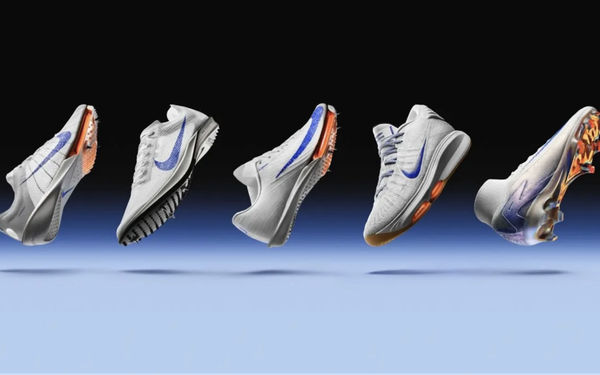
Nike's fourth-quarter results
disappointed observers, adding to a growing chorus of doubt as the company looks to regain some of its former growth glory.
Revenues for the apparel giant slipped 2% to $12.6 billion, while
sales in the Nike Direct division, which includes digital transactions and sales in Nike-owned stores, sank 8% to $5.1 billion. Wholesale revenues gained 5% to $7.1 billion. And sales at Converse
continued to fade, falling 18% to $480 million.
Net income for the fiscal fourth quarter gained 45% to $1.5 billion.
Nike is engineering a comeback, pulling back on the move to direct
sales, which began in 2020.
“We’re making a series of adjustments to position us to compete and win,” says John Donahoe, Nike’s president and chief executive officer,
in a call webcast for investors. “We’re sharpening our focus on sport, accelerating our pace and scaling of newness and innovation, driving bigger, bolder storytelling, and elevating the
entire marketplace to fuel brand distinction and be in the path of the consumer.” And he promised Olympic-themed marketing that will “cut through the clutter” as it tells those Nike
stories.
advertisement
advertisement
The quarter revealed plenty of those wins for the company, including double-digit sales gains in some performance products. But Donahoe says road running, once a significant
strength for Nike, continues to be “a competitive battlefield.”
Widespread softness in lifestyle sales, including men’s, women’s and Jordan, declined. And due to
macroeconomic uncertainty, changing new product introduction cycles and shifting consumer patterns in key markets, Nike is cutting its forecast. It anticipates that sales will fall in the mid-single
digits for the full fiscal year ahead and in the high single digits in the first half. Analysts had expected the company forecast to call for a gain of about 1%.
“A comeback at this
scale takes time,” said chief financial officer Matthew Friend on the call. “Although the next few quarters will be challenging, we are confident we are repositioning Nike to be more
competitive.”
That downward revision spooked many investors, slamming shares as much as 12% lower.
“Persistent sales weakness has added uncertainty to the firm's
turnaround,” writes David Swartz, an analyst who follows Nike for Morningstar. “Market conditions are more challenging than
expected.”
Even so, he believes the underlying strength of the Nike brand is a good bet and that the company “stands to benefit over the next few years from its planned marketing
and product initiatives and the growth of the global market.”
Brian Nagel, who follows Nike for Oppenheimer, is also relatively upbeat about the results. While the fourth-quarter numbers
were “messier than expected,” he writes, “we still look upon last night’s announcement and commentary as likely a 'last bad’ quarter and 'healthy clearing event’
for Nike.”
He continues to rate the company as likely to outperform its peers, as it is “working to aggressively reposition the company’s global enterprise amid an
increasingly soft demand backdrop in the U.S. and in markets across the globe.”